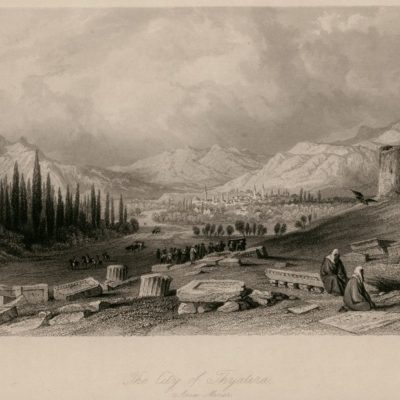The Historical Setting of Philippi and the Philippians

Knowing history can help us to understand the importance of certain events that have touched our lives. The historical setting of Philippi and the Philippians is a look at the time period of Paul and all the women that served him all in the name of Jesus Christ.
The Roman colony of Philippi was ruled by Philip II of Macedon, the father of Alexander the Great. Originally it was an agricultural settlement called Krenides in 356 b.c.e., renaming it Philippi. (DeSilva, 2004, p. 640).
Roman soldiers conquered Macedonia (168 B.C.) about two hundred years later. They divided the territory into four districts, each having its own legislature, and discontinued the mining operations. The city weakened until about 40 B.C., following the battle of Philippi. The city reappears during the Roman civil war that followed the assassination of Julius Caesar. Mark Antony and Octavian confronted the assassins of Caesar, Marcus Junius Brutus and Cassius, at the Battle of Philippi in the plain to the west of the city during October in 42 BC. Antony and Octavian were victorious in this final battle against the partisans of the Republic. (Melick, 1991, p. 23)
Philippi is an ancient city in northeastern Greece. It is surrounded by mountains on three sides. There were gold and silver mines of Mount Pangaeus. Philippi had a violent history. October of 42 B.C. Mark Antony and Octavian defeated Roman Republican forces led by Brutus and Cassius in two separate battles just west of Philippi. Brutus committed suicide immediately after the defeat. Mark Antony settled many veterans from his army and reestablished Philippi as a Roman colony. (Achtemeier, 1985).
When Paul came to the city around 49 CE, Philippi was an urban center at the eastern end of the plain, a few miles northwest from Neapolis. The people there were both Romans and Greeks and spoke predominantly Greek even though Latin was the official language. (Fee, 1995, p. 26).
Philippi was the chief city of part Macedonia (Greece). There was a Jewish synagogue located just outside the city walls. There were baptisms in Philippi of the household of Lydia, a seller of purple. She had probably converted to Judaism when living in Thyatira and brought her faith with her to Philippi. She listened to Paul speak and the Lord opened her heart to respond. Evidently her entire household responded as well, since all of them were baptized together. This is the beginnings of the Philippian church. The Philippian church was founded about A.D. 50–51, approximately a decade before the writing of the letter, during Paul’s second missionary journey (Acts 16:12–40).
Acts 16:21 tells us the citizens of Philippi identify themselves as “Romans” first, a reflection of their civic pride as part of a colony. Paul encourages the Philippian Christians to live less like grateful Roman citizens and to place more importance in their citizenship in the city of God, of which the Philippian church is a kind of colony (Philemon 3:20). Paul was especially by not participating in the imperial cult as a display of loyalty and gratitude. (DeSilva, 2004, p. 640).
Paul encountered certain damsel possessed with a spirit of divination a follower of Apollo in Acts 16:16.Apollo was particularly known for divination, but he was also associated with music, archery, medicine, and shepherding. Act 16:16 soothsaying is used to indicate the art of pythoness of Philippi. It is called a spirit of Python (Greek text), after the snake that guards the sacred shrine at Delphi. (Faw, 1993. P 184). A priestess of Apollo at Delphi Greek Mythology. ‘Soothsayer,’ in this case, is used of one who professes to indicate the future truthfully by a writer who does not believe that the soothsayer possesses such a power. (Clark, 1916-1918. P. 519).
Paul and Silas had cast out a spirit of divination from a certain damsel who was possessed. She could no longer bring in great gains for her masters and they were upset. They went to the magistrates and said that Paul and Silas were teaching customs that were not lawful for the Romans to receive, nor observe. It interesting to note the way the magistrates and masters of the damsel with the spirit of divination worked together for economic gain. The masters did not accuse Paul of stopping their financial gain they accused Paul of customs that were not lawful for Roman citizens. He was persuading the Gentiles to turn from idols with did abandon the Greco-Roman tradition. (Acts 16:16-22).
The strong Roman element certainly would suggest that Latin was the primary language of the city of Philippi. Greek was always spoken although to be fully conversant with the affairs of the city, Latin was necessary. Apart from Rome, Philippi was no doubt the most Roman of all the cities Paul visited. Paul entered the city in approximately A.D. 50–51 there would have been anti- Semitism attitude. There was very little Jewish population in Philippi during the first journey to Philippi by Paul. The Jewish law commanded that before a synagogue could be established there needed to be ten male heads of household lived. Under Emperor Claudius the Jews had been expelled. (Melick, 1991. P. 28).
There is much that can be gleaned about the culture and people of Philippi from the letters from Paul and his instructions to the Philippians. Paul gives thanks to God every time he remembers the saints in Christ Jesus at Philippi. Paul accepted money from the Philippian Christians in support of his ministry. Their fellowship in the gospel for the first day they listened, obey, yield to, comply with and trusted in the Word of Jesus Christ. The congregation was fully organized, with bishops and deacons at the head. Paul encourages them to steadfastness in their times of tribulation in the face of persecution and whatever happened they were to conduct themself in a manner worthy of the gospel of Christ. (Philippians 1:1-30).
The emperor cult was a favorite religion. The specific charge brought against Paul and his company was that he advocated customs “unlawful for us Romans to accept or practice” (Acts 16:21). The acknowledgment and worship of the emperor served Rome’s political interests and distinguished Roman loyalists. Rome had a somewhat tolerant attitude toward religion. Rome determined two classifications of religion: legal and illegal. Legal religions were affirmed by the senate, which generally accepted the ethnic, national religions of its conquered people. Some religions were unsanctioned or illegal. When the people of the religion did not promote public discord, anti-Roman sentiments, or excessive debauchery, Rome gave considerable freedom to them. (Melick, 1991)
It was at this time of Paul that Christianity had not been accepted or rejected by the Roman officials. The first encounter with the Roman government occurred at Philippi. Since the first missionary leaders were Jews, it seems likely that Rome considered Christianity a sect of Judaism, and its practice was protected as a national religion. It was only after the destruction of the temple in A.D. 70, it became increasingly clear that Christianity did not have a necessary tie to Judaism to qualify as a national religion, and the potential for persecution from the Roman government increased. (Melick, 1991).
The Philippian church was founded about A.D. 50–51, approximately a decade before the writing of the letter, during Paul’s second missionary journey (Acts 16:12–40). The Philippian church became a model for Christianity. We know the Philippian church did encounter distention in the congregation. (Philippians 4:2-7). We also have proofs of several characteristics of this congregation at Philippi. The first converts were Gentiles, and Gentiles dominated in the fellowship. The Gentile character of the church may have been questioned since Paul had warned the church of evil workers and beware of the concision. “Concision is an Archaic English noun meaning “a cutting off.” KJV uses “concision” in Philippians 3:2 to describe Paul’s opponents who insisted on circumcision as necessary for right relationship with God.” (Holman, 2003, p. 326). Paul praises the congregation at Philippians that in the beginning of the gospel, when Paul departed from Macedonia, there was no church communicated with him concerning giving and receiving to him except the Philippians. (Philippians 4:15).
Women held a prominent place in the church at Philippi. It has been suggested that it was because there were not enough Jewish men in Philippi to constitute a synagogue and the responsibility fell to the women. Women in this colony, as in most of the province of Macedonia, were treated with respect. The women in this area were active in public life. (Dockery, 1992, 179).
References:
Achtemeier, Paul J. (1985). Harper & Row and Society of Biblical Literature, Harper’s Bible Dictionary, 1st ed. San Francisco: Harper & Row. 1985), 785-86.
Clark, P. A. Gordon. (1916-1918) “Soothsaying” vol. 2, Dictionary of the Apostolic Church ed. James Hastings. (New York: Charles Scribner’s Sons.
DeSilva, David Arthur. (2004). An Introduction to the New Testament: Contexts, Methods and Ministry Formation. Downers Grove, IL: InterVarsity Press. pp. 640-49.
Dockery, David S., Butler, Trent C., Church, Christopher L. et al., (1992). Holman Bible Handbook. Nashville, TN: Holman Bible Publishers.
Faw, Chalmer Ernest Faw, (1993). Acts, Believers Church Bible Commentary. Scottdale, PA: Herald Press.
Fee, Gordon D. (1995).Philippians, NICNT, ed. Gordon D. Fee. Grand Rapids: Eerdmans.
Holman Illustrated Bible Dictionary. (2003) “Concision” ed. Chad Brand, Charles Draper, Archie England et al. Nashville, TN: Holman Bible Publishers.
Melick, Richard R. (1991). vol. 32, Philippians, Colossians, Philemon, The New American Commentary. Nashville: Broadman & Holman Publishers.
Cite Article Source
MLA Style Citation:
Holstein, Joanne “The Historical Setting of Philippi and the Philippians:.” Becker Bible Studies Library Jan 2015.< https://guidedbiblestudies.com/?p=2151,>.
APA Style Citation:
Holstein, Joanne (2015, January) “The Historical Setting of Philippi and the Philippians:.” Becker Bible Studies Library. Retrieved from https://guidedbiblestudies.com/?p=2151,.
Chicago Style Citation:
Holstein, Joanne (2015) “The Historical Setting of Philippi and the Philippians:.” Becker Bible Studies Library (January), https://guidedbiblestudies.com/?p=2151, (accessed).


